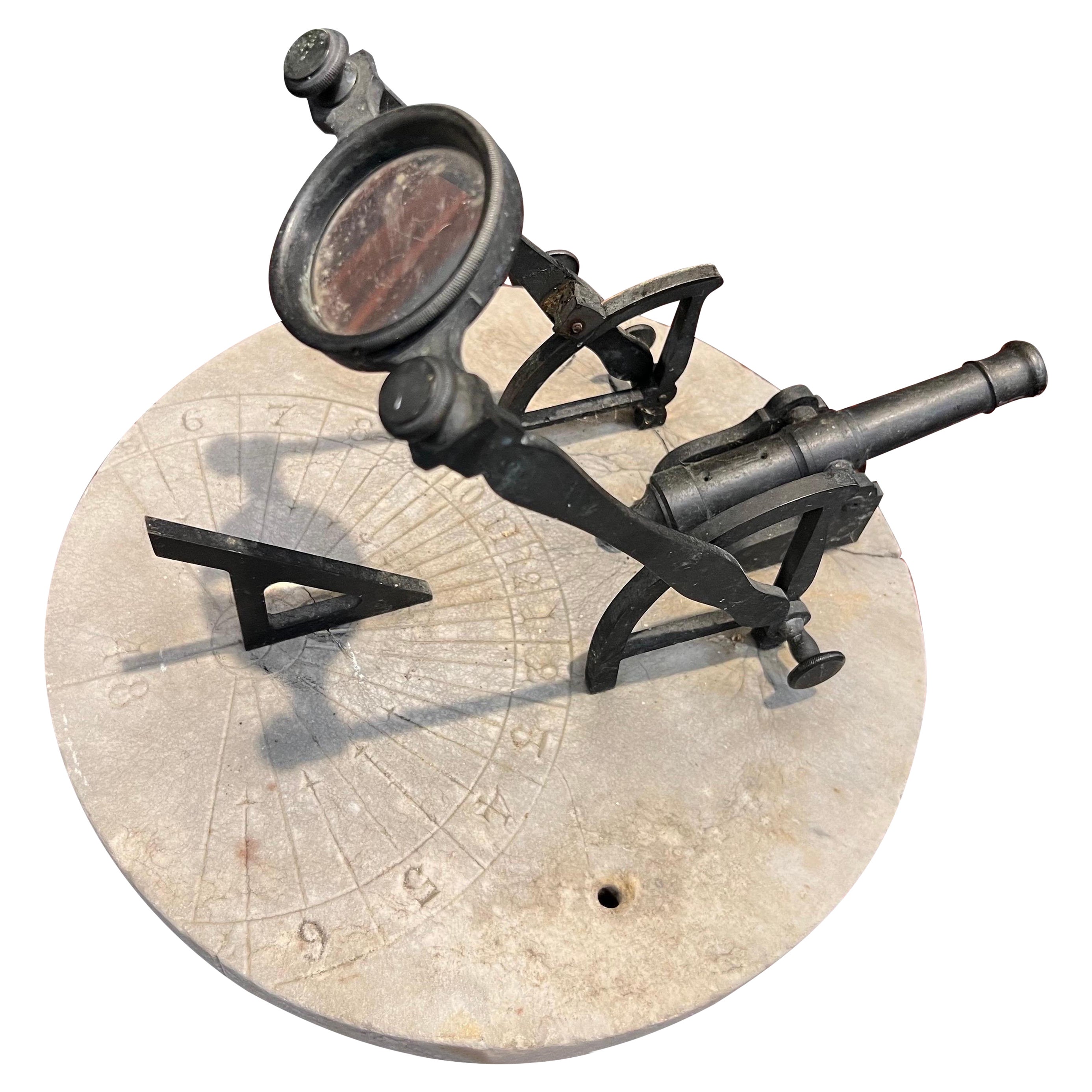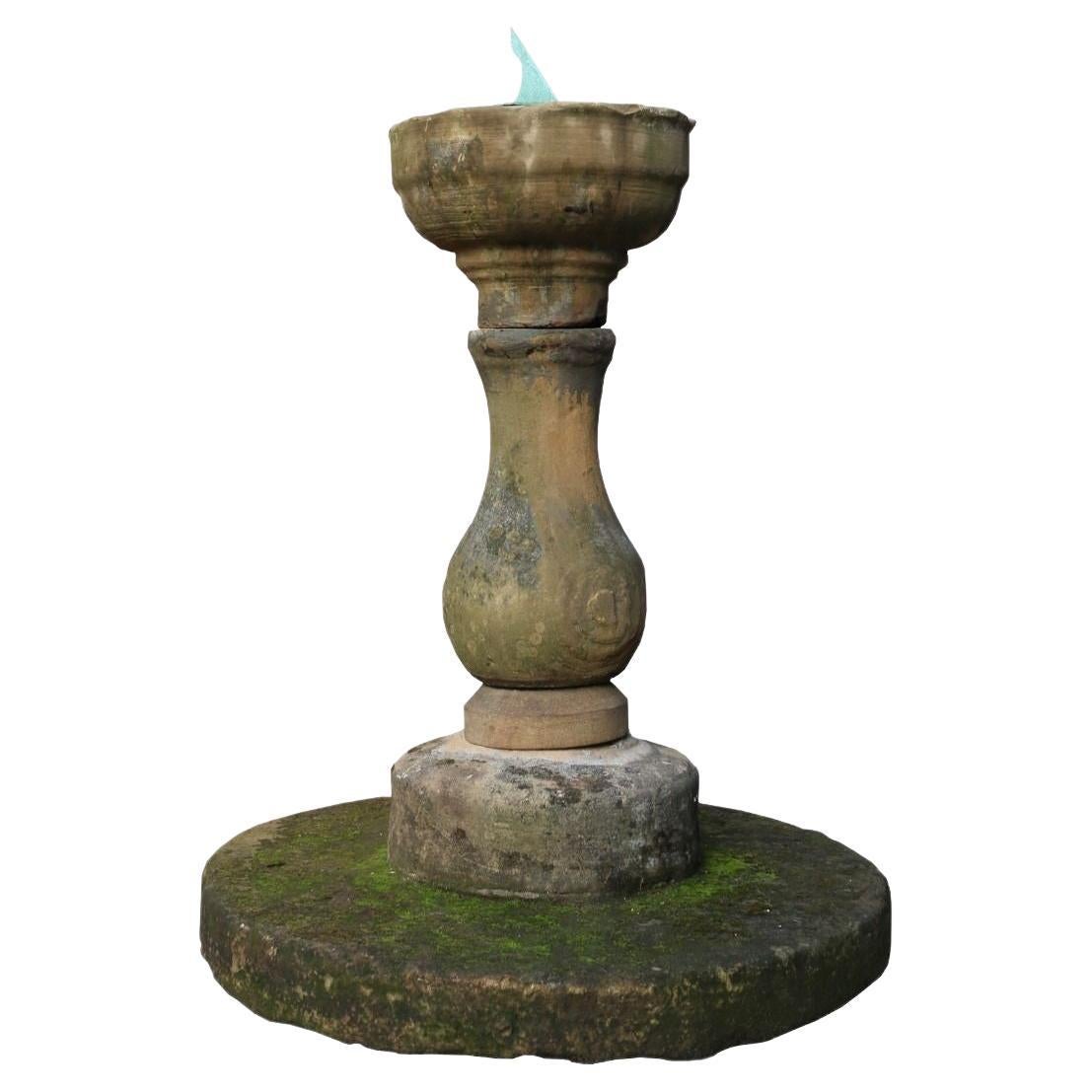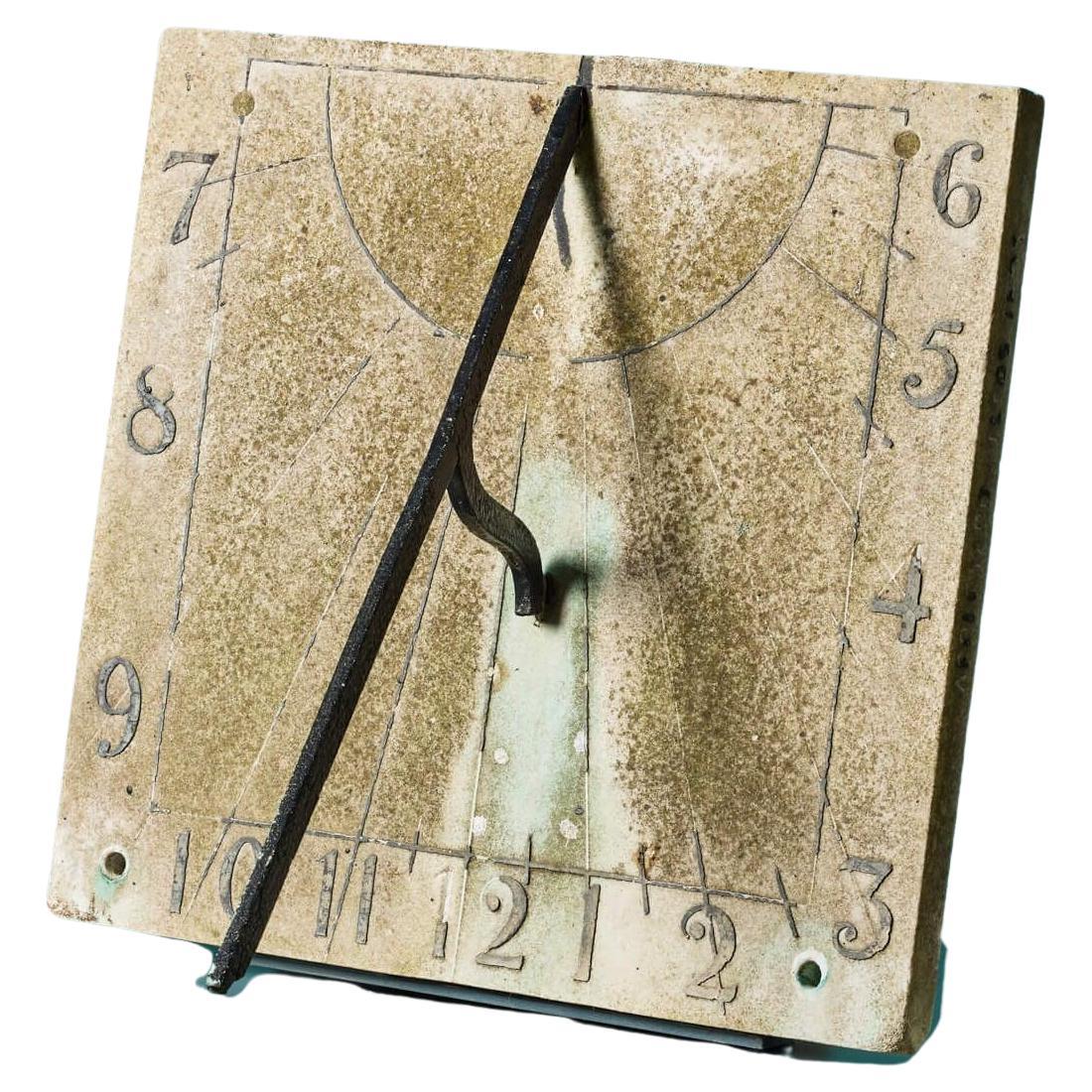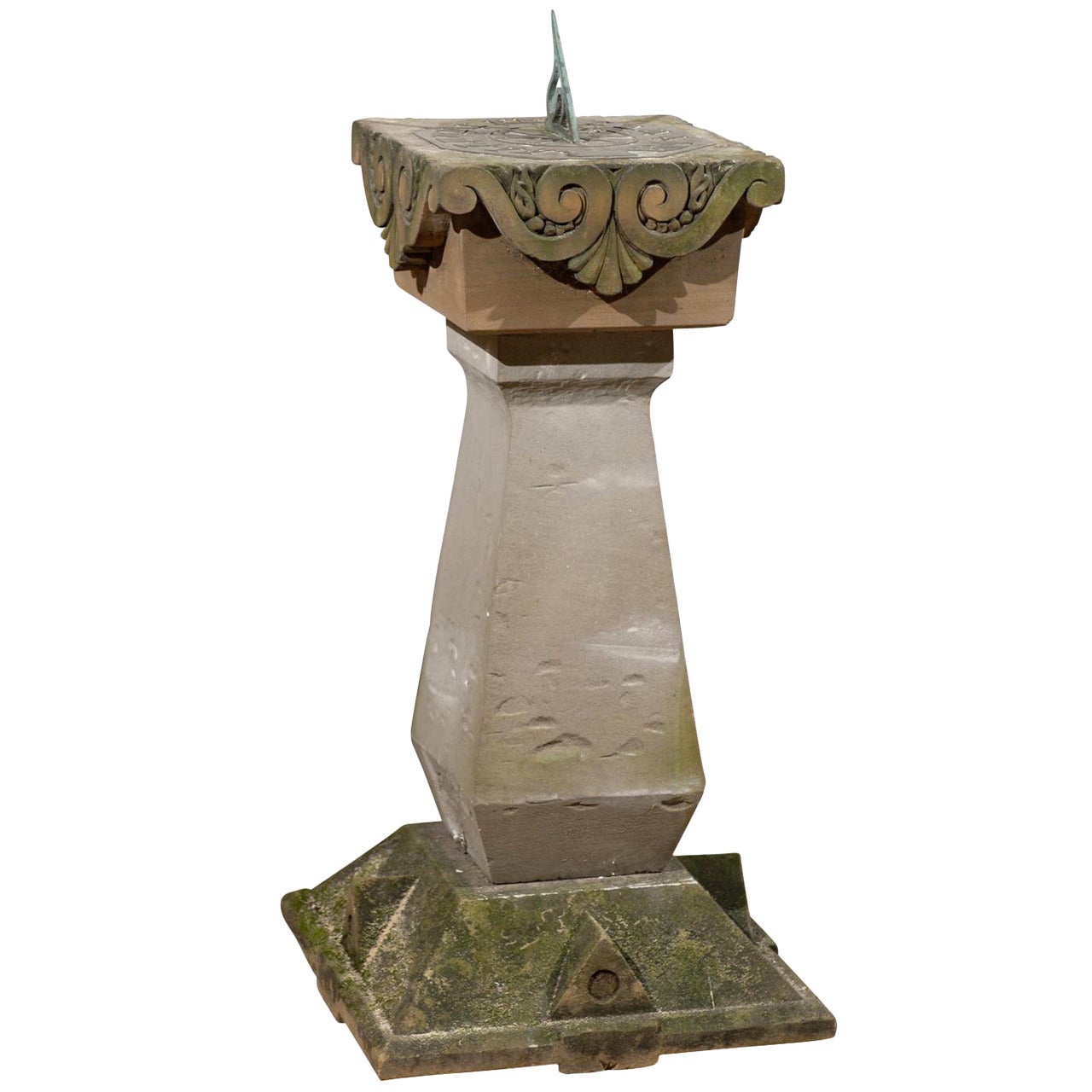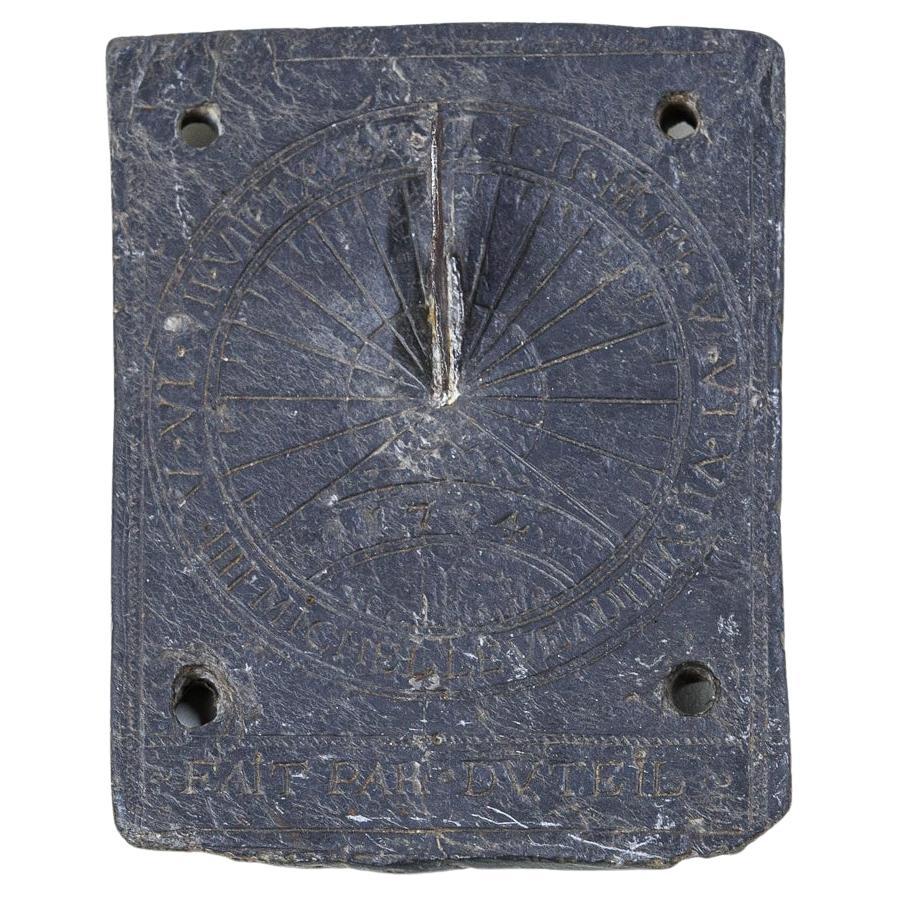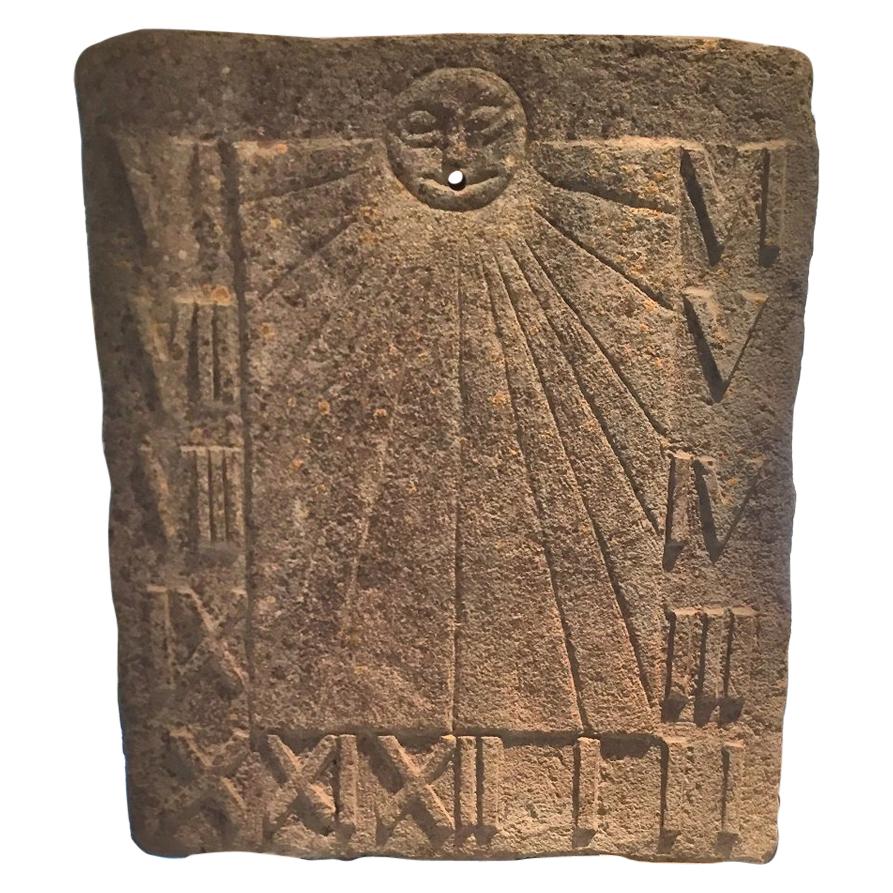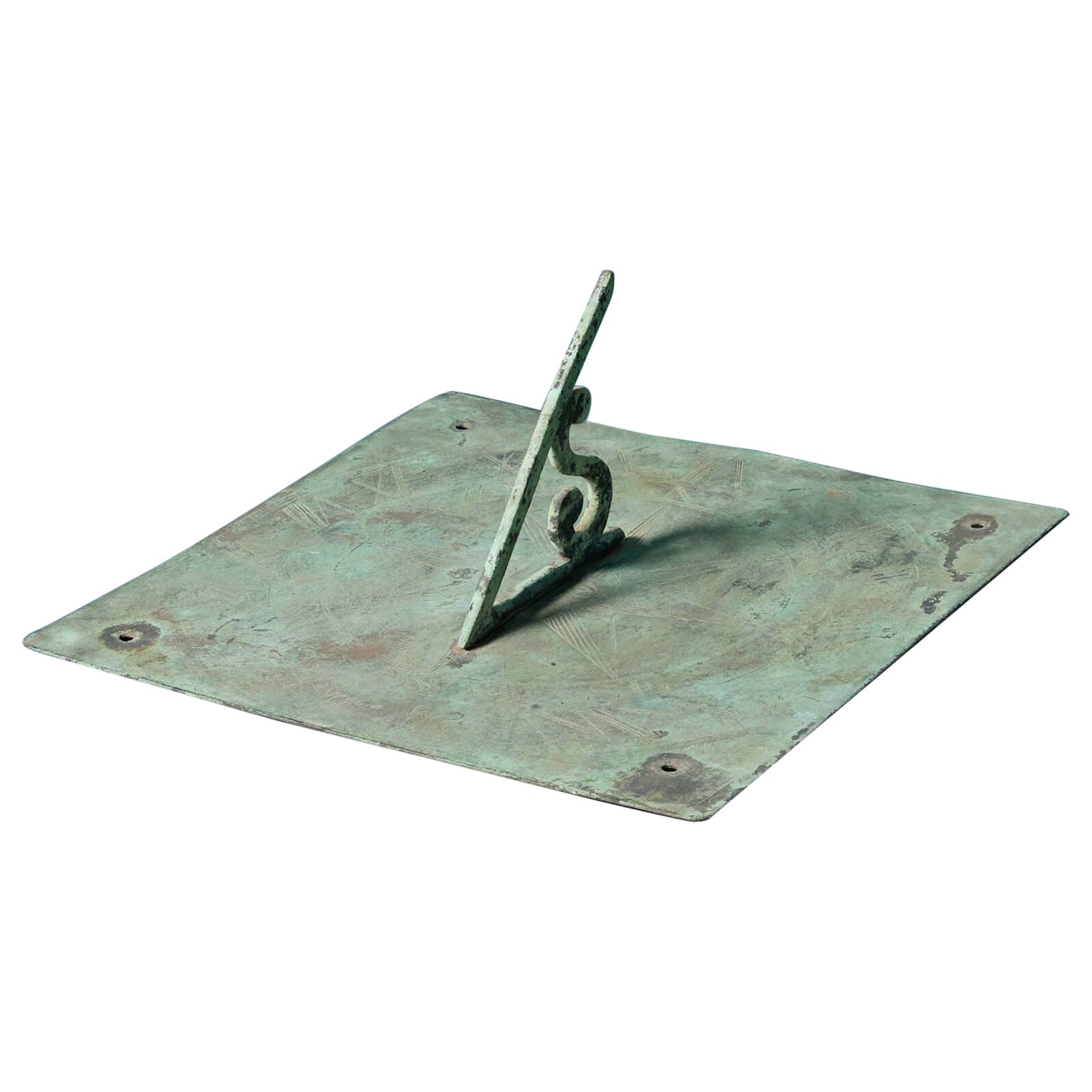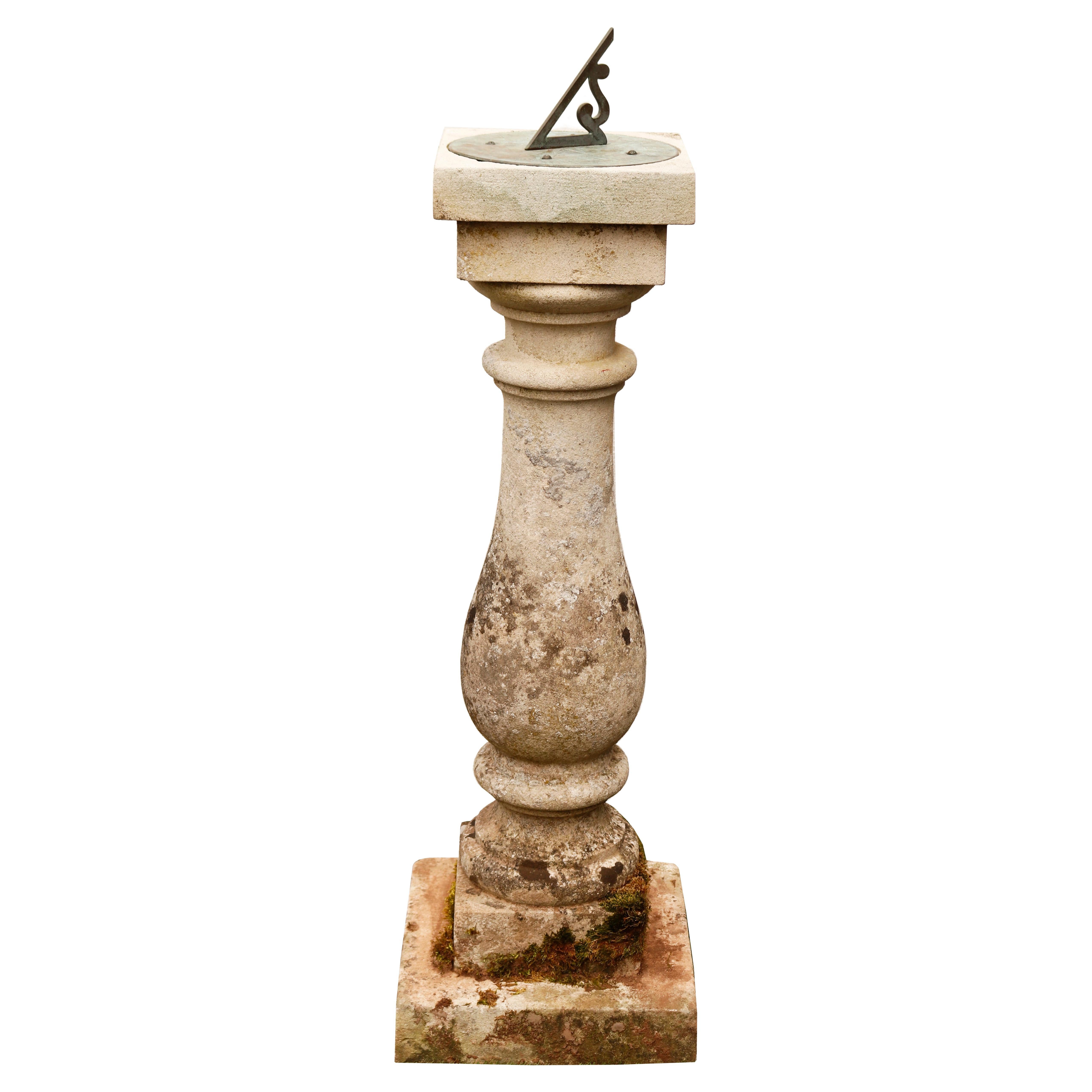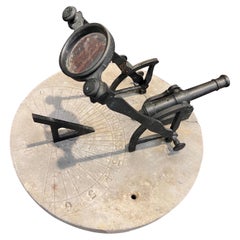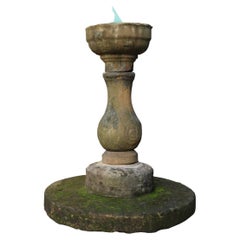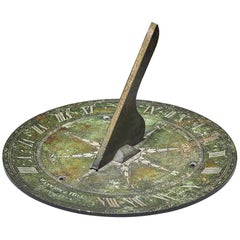
Rare 19th Century Bronze Horizontal Sundial by Watkins & Hill London
View Similar Items
Want more images or videos?
Request additional images or videos from the seller
1 of 8
Rare 19th Century Bronze Horizontal Sundial by Watkins & Hill London
About the Item
- Creator:Watkins & Hill (Clockmaker)
- Dimensions:Height: 5.52 in (14 cm)Diameter: 10.01 in (25.4 cm)
- Materials and Techniques:
- Place of Origin:
- Period:
- Date of Manufacture:1800-1850
- Condition:Wear consistent with age and use.
- Seller Location:Oxfordshire, GB
- Reference Number:1stDibs: LU4936221551622
About the Seller
5.0
Recognized Seller
These prestigious sellers are industry leaders and represent the highest echelon for item quality and design.
1stDibs seller since 2019
20 sales on 1stDibs
Associations
LAPADA - The Association of Arts & Antiques Dealers
More From This SellerView All
- 19th Century Silvered Bronze Athénienne Jardinière by Ferdinand BarbedienneBy Ferdinand BarbedienneLocated in Oxfordshire, United KingdomA French silvered-bronze athénienne by Ferdinand Barbedienne, Paris, last quarter 19th century with a revolving liner, the frieze applied with bucrania suspending ribbon-tied berried laurel swags above a border of bellflowers on a stippled ground above three seated female sphinxes issuing stylised foliage and scrolls on lion monopodia cast with the mask of Hercules, scrolling foliage and anthemions joined by stretchers, raised on a concave-sided triform marble base on a further thin silvered-bronze base, inscribed to the tripod base 'F. BARBEDIENNE' Measures: 103.3cm. high, 41.5cm. diameter; 3ft. 4 3/8 in, 1ft. 4 1/4. This impressive athénienne is a key reminder of the longevity of a particular model and design’s success from Antiquity through to the 19th century and up until this day. Typically known as the ‘Trépied du Temple d’Isis’, this athénienne is designed after the Roman antique originally found at Pompeii and now at the Museo Archeologico Nazionale, Naples (fig.1). From being for example an inspiration for the baptismal font of Napoléon’s son in 1811, this model was the inspiration to many highly skilled makers throughout the 19thcentury such as the Manfredini brothers from Milan and of course the Parisian well-established bronze founder Ferdinand Barbedienne who executed the present example. The Temple of Isis was a Roman temple dedicated to the Egyptian goddess Isis and was among one of the first discoveries during the excavation of Pompeii in 1764. Certainly considered as one of the most elegant examples of antique tripods, the existence of this model was then popularized to the rest of Europe via prints, one of the first being by Giovanni Battista Piranesi in 1779. This type of tripod was also popularised by an engraving in C. Percier and P. Fontaine’s, Receuil de Décorations Intérieures of 1801. Interestingly, there is also a watercolour now in the Musée Carnavalet, Paris, showing this type of tripod displayed at the 1801 Exposition des Produits de L’Industrie in the Louvre. The passion for Greek and Roman Art in the 19th century. The discovery of Pompeii and Herculaneum around the middle of the 18th century gave rise to a new passion for Antiquity and the excavated masterpieces renewed the repertoire of fine and decorative arts and served as models for Neoclassicism. Members of the aristocracy as well as connoisseurs, particularly in England, completed their education by undertaking a ‘Grand Tour’ of Italy and often fell victim to the recently unearthed Greek and Roman artefacts...Category
Antique 19th Century French Grand Tour Planters, Cachepots and Jardinières
MaterialsMarble, Silver Plate, Bronze
- Rare Silver Pocket Sundial and Compass by Michael Butterfield, Paris, circa 1700By Butterfield ParisLocated in Oxfordshire, United KingdomA beautiful, rare solid silver Anglo-French octagonal pocket sundial with compass by Michael Butterfield, circa 1700. The sundial is made for a latitude of 44° and could be used in places in the south of France such as Avignon and elsewhere along this parallel. The elaborately engraved base plate has a Roman chapter ring on which the gnomon (a triangular flap) casts its shadow. It is signed by the maker in the following manner: Butterfield A Paris. On one side is a glazed recessed compass with a blued steel hand to position the instrument in such a way that the time can be read. The hinged triangular gnomon is richly engraved and in the shape of a bird’s head. The folding gnomon and cut corners enable the dial to be carried in the pocket. The underside shows the latitudes of various Southern-French places in the relevant areas Its maker Michael Butterfield was an English instrument maker who based himself in 'Le Quay de l'Horloge' of Paris from circa 1685. These types of dials, often replicated by other makers, became known as Butterfield Dials...Category
Antique Late 17th Century French Louis XIV Carriage Clocks and Travel Cl...
MaterialsSilver
- Fine and Rare Early 19th Century Carved Bootjack in the Form of a PistolLocated in Oxfordshire, United KingdomA fine and rare !9th Century hand carved antique treen bootjack, to remove riding boots, in the unusual form of a pistol. This is a rare find and unfolds to form a bootjack with be...Category
Antique 19th Century Antiquities
MaterialsBeech
- Rare George III Celestial Pocket Globe by Cary, LondonBy CaryLocated in Oxfordshire, United KingdomA fine and rare 3" celestial pocket globe by G & W Cary, Strand, London circa 1791, housed in its original sharkskin case. A companion globe to terrestrial globes of this type we...Category
Antique Late 18th Century English George III Aviation Objects
MaterialsPlaster
- 19th-Century Flame Mahogany Mantel Clock by Breguet Raised by Lion Paw FeetBy Breguet a ParisLocated in Oxfordshire, United KingdomAn extremely rare mantel clock with a figured mahogany-veneered case by A-L Breguet Abraham-Louis Breguet (1747-1823), who was of Swiss origin, is undoubtedly the most celebrated clockmaker of the late eighteenth and early nineteenth centuries in France. He is responsible for the invention of the self-winding watch, the tourbillon and the sympathetic watch ( a watch that is placed in a cradle of a special clock. It is then linked by means of a pin fixed behind the clock dial. Built into the motion work which, when released by the clock, automatically sets the hands to the clock's time as well as correcting the watch's regulator necessitated by any degree of inaccuracy registered at the moment of synchronisation) and many other horological improvements and developments. Around the year 1807 Breguet brought in his son, Antoine-Louis (born 1776), as a business partner, and from this point, the firm became known as Breguet et Fils. Breguet had previously sent his son to London to study with the great English chronometer maker John Arnold...Category
Antique Late 18th Century French Empire Mantel Clocks
MaterialsBrass
- Striking 19th Century Carriage Clock with a Gilt-Brass Corniche Case by GrohéLocated in Oxfordshire, United KingdomStriking carriage clock with a gilt-brass corniche case by Grohé, circa 1880. A most attractive eight-day striking carriage clock, signed on...Category
Antique 19th Century French Neoclassical Carriage Clocks and Travel Clocks
MaterialsBrass
You May Also LikeView All
- 19th Century Solar Signal Cannon on Marble SundialLocated in Charleston, SCIncredibly cool 19th century solar powered signal canon marble sun dial base. This signal cannon can be set to ignite with the sun through the attached magnifying glass- which can be...Category
Antique 19th Century Garden Ornaments
MaterialsMarble, Iron
- 19th Century York Stone Sundial with Bronze PlateLocated in Wormelow, HerefordshireA good baluster shaped Yorkstone sundial with a nicely weathered finish. Measures: Base Diameter 95 cm Top Diameter 43 cm Sundial Plate Diameter 25 cm.Category
Antique Late 19th Century Sundials
MaterialsStone
- Vintage Garden Armillary Sundial on Cast Corinthian Column PedestalLocated in Elkhart, INA stunning vintage garden sundial on cast concrete corinthian column pedestal Circa 1980s Metal armillary, atop cast stone pedestal Measures:...Category
Vintage 1980s Neoclassical Sundials
MaterialsConcrete, Iron
- 19th Century English Reconstituted Stone SundialLocated in Houston, TXEnglish Garden sundial on reconstituted stone. Metal sundial is loose.Category
Antique Mid-19th Century British Sundials
MaterialsCast Stone
- Antique 19th Century Square Marble SundialLocated in Wormelow, HerefordshireAn antique 19th century square marble sundial dating to circa 1893. This Victorian wall mounted sundial stands out with its black painted iron gno...Category
Antique Late 19th Century English Victorian Sundials
MaterialsStone, Marble, Iron
- Swedish Atlas Armillary Sundial Mounted on Hand-Carved Antique Stone PlinthLocated in Atlanta, GAA Swedish armillary of Atlas mounted onto stone plinth. This vintage Swedish armillary sundial is supported on the single arm of mighty Atlas, and is...Category
Mid-20th Century Swedish Sundials
MaterialsStone, Metal, Copper
Recently Viewed
View AllMore Ways To Browse
Antique Garden Sundial Antiques
Antique Garden Sundial
Antique Garden Sundials
Antique Garden Sundial Garden
Garden Antique Sundials Sundial Garden
Sundial Base
Antique Char
Roman Francis
Ring Roman Old
Old Roman Rings
Antique Optician
William And Son Ring
Old Antique Compass
Used Refractor Telescopes
Antique Sundial Base
Antique Bronze Sundial
Time Sundial
Charing Cross
